Inside Eight of the World’s ELITE Tier One Units (What do they do?)

Around the world, special operations units are trained to go beyond the capabilities of conventional forces to perform complex missions. Despite how capable and effective they are, some units take special operations to the next level. These units, often referred to as “Tier One units,” are the elite of the elite.
They are the units many operators aspire to be in, with the highest selection requirements. Most only accept the top operators from the special operations units in their entire countries, because they're often tasked with the most critical national security missions and are expected to operate in smaller, better equipped teams with greater autonomy and a higher operational tempo.
With so many Tier One units around the world, we will examine hardened and experienced units from the United States, Israel, the United Kingdom, Canada, Australia, Poland, Germany, and France. It’s an arena of elite operators, covert ops, and spine-chilling missions. What sets them apart? What's their background? How do their training and selection differ? And most importantly, what makes each one of them unique?
Keep reading, and we’re going to answer all of those questions for you, and much more.
Tier One units recruit individuals who are not only physically strong, but mentally powerful. They need resilience, problem-solving skills, and an extraordinary ability to work seamlessly as part of a unit, especially under extreme stress. After all, they will have to make critical decisions on the ground without attracting attention. Tier One operators undergo rigorous and specialized training that goes beyond the standard. It is designed to push individuals to their limits and beyond, ensuring that only the most capable and resilient candidates become their members. These communities don’t hand out awards for "participation." In fact, they make it a point to weed out those who are not ready to join their ranks, and only the most qualified make the cut.
Due to their diverse and challenging mission set, the training programs reflect versatility, adaptability, and a high level of several skills, which can include advanced hand-to-hand combat, language proficiency, mission-impossible style parachuting techniques, explosives, and a lot of specialized weapons training. Training also includes advanced survival skills and navigation, basically becoming one’s own GPS through various terrains and environments, often in complete darkness. Tier One Units often undergo mission-specific training, including simulated scenarios that replicate the challenges they may face during real-world missions.
Comparing Tier One units from around the world is complex, especially because each unit is unique and tailored to the specific needs and objectives of its respective country. Also, much of the information about these units is classified, and what is available to the public is quite limited. To put it simply, what makes Tier One operators unique is a combination of advanced training, versatility, specialized missions, autonomy, and the ability to operate in a wide range of environments. There are infinite scenarios that they can be placed in, especially when you take into account that these units are often deployed worldwide as a geopolitical weapon whose effectiveness depends on how all of these factors interact.
With all of that said, let’s start with our first Tier One unit, Delta Force.
TABLE OF CONTENTS
USA’S TIER ONE UNIT: DELTA FORCE
ISRAEL’S TIER ONE UNIT: SAYERET MATKAL
UNITED KINGDOM’S TIER ONE UNIT: SPECIAL AIR SERVICE (SAS)
CANADA’S TIER ONE UNIT: JOINT TASK FORCE 2
AUSTRALIA’S TIER ONE UNIT: SPECIAL AIR SERVICE REGIMENT (SASR)
POLAND’S TIER ONE UNIT: OPERATIONAL MOBILE REACTION GROUP (GROM)
GERMANY’S TIER ONE UNIT: KOMMANDO SPEZIALKRÄFTE (KSK)
EIGHT TIER ONE UNITS: CONCLUSION
USA’S TIER ONE UNIT: DELTA FORCE

Delta Force is one of the United States’ most well-known Tier One units. Their motto is sine pari "see-nay pah-ree" which means without equal. Delta Force is an elite group that specializes in counter-terrorism, and has a legendary mission success rate.
It was formed by the United States in the late 1970s, created in response to the increasing threat of terrorism, and inspired by the success of the British Special Air Service. Delta Force’s first major mission was Operation Eagle Claw in April 1980, which was a rescue mission of American hostages in Iran. Despite the mission failing, important lessons were learned that led to increased funding and support, evolving and expanding the unit’s capabilities to the point that over the next two decades, Delta Force not only demonstrated its effectiveness over and over again, but became the new benchmark for special operations all over the world.
Its focus has been on counter-terrorism, hostage rescue, and direct-action missions, but they are incredibly versatile. Delta Force often operates as part of a Joint Task Force alongside other U.S. special operations units, such as the Navy SEALs and the 75th Ranger Regiment. It has also participated in various multinational operations and worked closely with special operations units from other countries.
Delta Force is unique in that it recruits from every branch of the U.S. military, unlike other U.S. Tier One units. The candidates undergo a secretive and intense selection and training process that is constantly changing, but it always includes the regular special operations training routine: intense physical conditioning, close-quarters combat, land navigation, HALO techniques, and survival training. There is also a significant emphasis on marksmanship. Delta Force also trains in top-notch training facilities, including the infamous "House of Horrors", where members practice different scenarios, including hostage rescue.
All this training has paid off. There are several high-profile successful missions executed by the Delta Force. They have played a role in major conflicts that threatened U.S. interests, including the Persian Gulf War and the Global War on Terrorism in Afghanistan and Iraq. Their reconnaissance and intelligence-gathering missions include the US invasion of Grenada in 1983, and their hostage rescue missions include the freeing of hostages from a hijacked cruise ship in 1985. Delta Force has been especially recognized in missions to capture high-value targets. The special unit was involved in Operation Restore Hope in Somalia, where the most well-known mission was the Battle of Mogadishu in 1993, depicted in the book and film “Black Hawk Down''. High-profile capture missions also include the capture of Panamanian leader Manuel Noriega, Saddam Hussein, and assisting in the capture of the infamous drug kingpin El Chapo.
While Delta Force operates in the shadows, its reputation as one of the world's premier special operations units is well-established, well earned, and well-known. Its members are recognized for their skill, professionalism, and ability to handle the most challenging missions.
With Delta Force covered, let’s move on to Israel’s Tier One special operations unit: The Sayeret Matkal.
ISRAEL’S TIER ONE UNIT: SAYERET MATKAL

The General Staff Reconnaissance Unit, or Sayeret Matkal, is the main Tier One unit of the Israel Defense Forces, also known as “The Unit.” Like other units, it was modeled after the British Special Air Service, to the point where they borrowed their motto, “Who Dares Wins.” It was established in 1957 to conduct deep reconnaissance missions behind enemy lines. During the first decades, Sayeret Matkal focused on intelligence gathering and covert operations, including gathering information about neighboring Arab states. The Unit has played a crucial role in the Israel Defense Forces, or IDF for short, and has evolved into a multi-faceted special operations unit with expertise in counter-terrorism, intelligence gathering, and other specialized operations. It is a critical asset for the Israeli military.
As with every other Special Operations unit, the Sayeret Matkal has a demanding selection process. Twice a year, it holds a notoriously grueling selection, similar to the Navy SEALs Hell Week, where recruits last several sleepless days. Those who make it go into an almost endless 20-month training plan, with a heavy emphasis on small arms, camouflage, reconnaissance, and other skills important for survival behind enemy lines. Training also focuses on counter-terrorism, and they also conduct long-range solo navigation exercises, and some basic knowledge for those who are about to become an elite member of an elite army in a country constantly threatened and surrounded by enemies.
Since the first major engagements of the IDF, the unit has played a crucial role. The Sayeret Matkal was a fundamental piece of Israel’s victory in the Six-Day War, executing successful operations in the Sinai Peninsula, the Golan Heights, and the West Bank. They also did some serious ass-kicking missions during the Lebanese Civil War. They gained international attention during the Munich Olympics in 1972, and for their involvement in the series of covert missions that were part of Israel's revenge for the killing of Israeli athletes, better known as Operation Wrath of God. During one of these missions, Sayeret commandos conducted the assassinations of the leaders of the massacre in three separate locations at the same time, all in enemy-held territory.
Another famous operation in Sayeret Matkal’s history is Operation Entebbe in 1976, after terrorists hijacked an airplane full of Israeli citizens and Jews and then held them hostage in Uganda’s Entebbe Airport with the support of Uganda’s then-dictator. In a swift and precise operation, the Israeli commandos stormed the terminal, neutralized the hijackers, and rescued 102 hostages. It is perhaps one of the most famous hostage rescue missions in the world’s history, and its remarkable success showcased the Sayeret’s capability to conduct long-range, high-risk operations as well as Israel’s resolve to protect its citizens. Their results are nothing short of excellence. And excellence is what we’ll find with the next Tier One Special Operations unit, from the land of classic espionage and high tea.
With Sayeret Matkal covered, let’s move on to the United Kingdom’s Special Air Service.
UNITED KINGDOM’S TIER ONE UNIT: SPECIAL AIR SERVICE (SAS)

The Special Air Service is known by their countrymen as "The Regiment." They are renowned for their creativity, adaptability, and wicked wit. Their clever tactics and legendary plans inspired most special operations units from around the world to be modeled after them. It is no secret that several Tier One units around the world, including Delta Force, have acknowledged this common legacy.
Experts in counterterrorism and versatility, this military legend is willing to do whatever it takes for the king and country and has a long history to prove it.
Founded during World War II, the SAS is one of the oldest and most renowned Tier One units. The SAS initially conducted reconnaissance and sabotage missions against German and Italian forces in North Africa. The unit earned a formidable reputation for its hit-and-run tactics and ability to operate deep behind enemy lines. The SAS expanded and eventually held operations in Italy and France, playing a significant role in the Allied invasion of France. After the war ended, the SAS earned its continued relevance by playing crucial roles in different conflicts like the Northern Ireland Troubles, the Falklands War, and the Gulf War. The SAS is well-known for a broad range of capabilities, including counter-terrorism, special reconnaissance, and unconventional warfare, among others.
For example, the SAS is surprisingly good at jungle warfare, despite the fact that the UK has no jungles whatsoever. They also specialize in environments that deal with mountain warfare and cold-weather operations, and they have a boat troop to operate in maritime environments. In fact, sea navigation is important for the SAS, Britain being an island and all.
The British SAS selection and training processes evolved to meet the changing nature of modern warfare and security challenges. The selection process lasts for several weeks and takes place in the mountainous regions of the Brecon Beacons in Wales and the Scottish Highlands. The candidates are given limited information and are intentionally sleep-deprived to evaluate their mental stress and performance under extreme fatigue. They also undergo individual and team-based exercises. Out of an average of 125 candidates, only 10 will be selected after the demanding training program, which includes jungle, desert, and mountain warfare.
The SAS motto is “Who Dares Wins," which is a reflection of the daring mission they have kept for more than 7 decades. The first time the public saw the SAS in action was when they successfully rescued hostages during the Iranian Embassy Siege in London in 1980. Until that day, the SAS had kept an impressive level of secrecy, but the hostage situation was broadcasted, and so was the 17-minute-long rescue operation. Their success was met with worldwide interest for Special Operations, and many more applicants.
With the perfect blend of brute force and finesse, the British SAS is everything you want in a Tier-One unit. As they say, or at least they should, keep calm and let the British SAS carry on!
Now moving on from crumpets and tea, to maple syrup and hockey. The next unit on this blog post is the Canadian Joint Task Force 2.
CANADA’S TIER ONE UNIT: JOINT TASK FORCE 2

Formed in the early 1990’s, Joint Task Force 2 is Canada’s only Tier One unit. Specializing in counter-terrorism, intelligence gathering, and high-risk missions, the Joint Task Force 2 mission is to protect Canada and its citizens from terrorism, at home and overseas. They also have federal responsibility for hostage rescue and counterterrorism inside Canada. They are a precisely lethal, tactically brilliant force that will kick your ass and say “sorry” afterwards.
As it goes with special operations units, Joint Task Force 2’s recruitment and training are tough, and only 2 in 10 soldiers who train for the unit succeed in becoming "assaulters.”. Most of Joint Task Force 2’s first 100 members were originally a part of Canada’s Light Infantry and Airborne Regiment. Now they recruit from all of the Canadian military.
Joint Task Force 2 was deployed in its first major combat role outside of Canada in 2001 when it joined the coalition of Special Operations in Afghanistan with about 40 members. Interestingly enough, its participation in the mission only came to light after the publication of a photograph of Joint Task Force 2 members escorting detainees off a military aircraft. Since then, Joint Task Force 2 regularly collaborated with allied special operators, including those from their NATO partners. This includes participating in joint training exercises, sharing expertise, and joint missions in Bosnia, Haiti, Rwanda, Peru, and Iraq.
As the younger sibling in the special operations world, Joint Task Force 2 has learned much from its older and more experienced brothers to ensure smooth operations. Maybe that’s one of the reasons why it maintains an exceptionally low public profile, unlike some of the other units. The amount of publicly available information, which is low for any Tier One special operations unit, is incredibly low in comparison. What we do know for certain is that Joint Task Force 2 remains the only foreign special operations unit to be conducted into American Tier One ranking. And, on top of that all, in 2017, a Joint Task Force 2 sniper successfully eliminated a target from over 2 miles away, holding the world record for the longest kill-shot ever.
With Joint Task Force 2 covered, let’s move on to a unit from the land down under, the Australian Special Air Service Regiment.
AUSTRALIA’S TIER ONE UNIT: SPECIAL AIR SERVICE REGIMENT (SASR)

The Special Air Service Regiment, also known as the “Chicken Stranglers”, because of their survival skills and ability to live off the land, is a versatile Tier One unit with a taste for Marmite and a long history of professionalism, skill, and ability.
Established in 1957, the SASR was modeled after the British SAS, almost to the detail, (who would’ve guessed), and since the very beginning, it has been actively deployed in numerous conflicts and operations, including Iraq and Afghanistan. SASR was initially created to serve as a reconnaissance unit during the Malayan Emergency, also known as the Anti-British National Liberation War in Malaysia. And, from the very beginning, maybe because it was originally created to play a part in a guerrilla-style war, the SASR had a special focus on unconventional warfare. It later helped them play a significant role in reconnaissance and intelligence-gathering missions while supporting Australian and allied forces during the Vietnam War. During this conflict, the SASR gained its reputation as a highly skilled and effective Special Operations unit, with their members earning the nickname “phantoms of the jungle” for their stealthy maneuvers. The SASR has used its abilities in both the Persian Gulf and the Afghanistan Wars, and since 2001, it has been extensively involved in the War on Terror.
The SASR has one of the most infamous selection processes, which is a 21-day course, simply known as “selection”. It consists of three weeks of near torture involving a series of challenges such as forced marches that include scaling almost impossible terrain with a full pack, navigation exercises, endurance tests, and psychological interviews. The course is designed to evaluate candidates’ stamina, determination, intelligence, reliability, and self-discipline. Unlike the British SAS, whose selection is limited to only members of the Army, the SASR is open to all members of the Australian Defense Force. Additionally, because of their location, they also include a desert phase in their selection.
SASR often cross-trains with other elite units, including the US Navy SEALs, Germany’s GSG 9 and, of course, the British SAS, with whom they keep a very close relationship. Due to the diverse nature of its operations and their environments, SASR members undergo cultural awareness training in order to operate effectively. SASR is also known for using specialized long-range patrol vehicles, adapted for reconnaissance and special operations missions.
To further distinguish themselves from their British counterparts, whose regiments are organized into four troops, the SASR squadrons are composed of just three troops: a boat troop, which specializes in maritime operations; an airborne troop, which specializes in advanced parachuting, and a ground troop, which specializes in jungle warfare and long-range desert reconnaissance.
SASR implements a rotating duty scheme where two squadrons do strategic reconnaissance work while the third one does counter-terrorism. Every 12 months, they rotate roles, and every 3rd year, each squadron switches to a specific counter-terrorist regime of work and organization. This allows for more secrecy and keeps things interesting for their group members. They also have 2 tactical assault groups, East and West, and in 2005 they created a fourth SASR Squadron, fully devoted to clandestine military intelligence. However, Squadron 4 is not publicly acknowledged by the Australian government.
SASR remains a critical component of Australia’s special operations capabilities, contributing to national security and global stability. After all, nobody wants to mess with the toughest of the land, where everything is designed to kill you.
The members of the next Tier One special operations unit were raised on vodka, pierogies, and a wish for freedom. They’re a young unit filled with tactical brilliance. Let’s move on to explain the Operational-Maneuver Response Group.
POLAND’S TIER ONE UNIT: OPERATIONAL MOBILE REACTION GROUP (GROM)

Formed in 1990, GROM stands for Grupa Reagowania Operacyino-Manewrowego. GROM also translates to "thunder" in English. The name and logo reflect the unit's dynamic and powerful nature, symbolizing the force and impact it brings to special operations.
GROM is the elite counter-terrorism unit of the Polish Armed Forces. Following the success of its predecessor, the Anti-Terrorist Operation Team “Alfa'', and an attack on a Polish diplomat in Lebanon, the GROM unit was created to address the need for a specialized counter-terrorism and special operations force. This is a necessity because, when you check out the history of Poland and its many invaders, as well as their geographic location and importance to their allies, including NATO, responding to domestic threats and emergencies is a top priority.
GROM got their initial training from the Brits and the Americans. They sent 13 soldiers to train in the Rocky Mountains in 1990 and got some valuable knowledge from the FBI, the CIA, and SEAL Team 6. Their combat experience which has been gained in Haiti, the Balkans, Iraq, Afghanistan, and probably a few other places that we will not know about at least for now, makes GROM a young force to be reckoned with.
GROM’s selection process is known for its toughness. Candidates undergo rigorous physical and psychological assessments to determine their suitability for the unit. They starve, literally, to be chosen: candidates burn 5.000 calories a day and are deliberately malnourished to test their resolve. To become a member of GROM, you have to really want it. Also, you have to be an intelligent, strong, disciplined soldier, who speaks at least two languages and has medical skills. Yes, you heard that right: GROM operators are known as “the surgeons” due to their extensive medical training and knowledge, as well as their surgical ability in special operations. Good killers AND good medics: they took the expression “matter of life and death” quite literally.
As we said before, GROM has participated in numerous international missions and deployments. They conducted special operations against the Taliban and Al-Qaeda in Afghanistan, and they were part of Operation Iraqi Freedom alongside allied forces. GROM has also been involved in counter-piracy operations off the coast of Somalia, where it participated in efforts to combat maritime piracy.
GROM works with fewer resources and institutional support than the other special operations units covered today, but they make up for it with a never-ending supply of bravery and skill. It is said that they are the guys whom the US calls when they have a mission behind enemy lines that they want to keep very secret and quiet. Polish fighting spirit, there’s no price on that!
With GROM covered, let’s move on to the next Tier One unit, Germany’s KSK.
GERMANY’S TIER ONE UNIT: KOMMANDO SPEZIALKRÄFTE (KSK)

Formed in the mid-1990s, the Kommando Spezialkräfte, or KSK for short, is Germany’s Tier One unit. It was designated as the primary unit for counter-terrorism and special operations, structured to be highly adaptable and capable of handling a wide range of missions, especially those related to the new security challenges that came with the end of the Cold War. These include fighting transnational enemies, as well as being able to protect German citizens outside German borders. In fact, the event that really motivated the creation of the KSK was the genocide in Rwanda. 11 employees of the German radio broadcaster “DW” couldn’t escape the country, and Germany had to resort to Belgian paracommandos to help them secure and extract their German citizens, who had to ride back confused as to why Belgians and not Germans were getting them home.
Today, the KSK executes offensive operations, which include the rescue and liberation of German citizens or other persons from captivity, hostage situations, or terrorist threat scenarios abroad. The German Federal Assembly, which is Germany’s version of Congress, authorizes every KSK deployment, and as far as we know, they have engaged inside Kosovo, Bosnia, and Afghanistan. However, not even the Federal Assembly gets to know the specific operational details of the KSK's top secret missions.
And speaking about missions, the first mission carried out by the KSK was the capture of Serbian Milorad Kronjelac, a suspected war criminal, to be handed over to the International Criminal Tribunal in The Hague. Serbia refused to deport him, so KSK soldiers built a reconstruction of the guy's apartment to prepare for the operation for weeks, and on a morning in June 1998, they launched the operation. That same evening, Kronjelac was delivered with a bow and a little note to The Hague. Swift and clean, like the best operations are.
As an awardee of the Navy Presidential Unit Citation of 2004, the KSK has proven to be a highly valuable and professional ally for the US and various NATO operations, especially in intelligence gathering and reconnaissance missions, such as the tracking and capture of Taliban leaders in Afghanistan. Trust us, there is no place to hide from the tracking abilities of the KSK. Just like a great German shepherd, they will not lose your scent.
The KSK selection process and training is a modified version of the British SAS and some of the U.S. military Tier One processes. They recruit from any part of the German Army, and candidates have to endure severe psychological and physical tests. All candidates must be prepared to serve voluntarily for a minimum of 6 years in the KSK. The KSK is headquartered in Calw, a mountain range in the southwest corner of Germany. This location is where the Romans baptized it as the "Black Forest" because of the dense, dark trees that grow there and the large packs of wolves that lurked behind the trees to prey on weak and inexperienced soldiers. This legacy is why the KSK uses the Black Forest as grounds for the three-month-long physical endurance phase of their selection and training.
The operators are trained for direct action, reconnaissance, unconventional warfare, and special operations. One of the fun parts of their training is learning how to drive fast and safely on ice, mud, gravel and other surfaces. Basically, The Fast and the Furious: Berlin Drift.
The whole training process includes approximately 20 courses in 7 different places worldwide, such as Norway for Arctic terrain, and Belize for jungle environments. Once deployed, the KSK is organized and operates in three commando companies, plus a long-range reconnaissance patrol for intelligence gathering and support units.
With Germany’s KSK covered, we’re going to move on to our last, but certainly not least, Tier One unit: France’s GIGN.
FRANCE’S TIER ONE UNIT: GIGN

The GIGN, which stands for Groupe D’intervention De La Gendarmerie Nationale, is France’s premier counter-terrorism unit, both a part of the French Armed Forces and an elite tactical unit of the French National Gendarmerie. This means that it is technically not a special operations unit, rather, it is a paramilitary unit.
The GIGN’s motto is "Commitment for life" and fire discipline is so important to them that they’re the only operators officially issued a six-shot . 357 revolver when they graduate from training. And although they do use pistols, the revolvers are a reminder of the value of each human life and how each shot has to count.
The GIGN started its operations in 1974, as a small tactical unit of the French police, designed to protect French citizens in hostage situations like the one at the Munich Olympics, where PLO terrorists held members of the Israeli team hostage, eventually killing them. A lesson that has made them rack up a significant track record since then. They have become the protagonists of some of the most renowned rescue missions in contemporary history, with nearly a thousand operators, working both in France and its overseas territories.
They are a specialized, well-oiled tour de force, with a background in nuclear, chemical, and biological threats, as well as complex hostage situations, including boat and airplane hijackings. It was an operation involving an Air France plane that brought this shadow operating unit to the global spotlight. On live TV in 1994, GIGN operatives rescued 229 passengers and neutralized all 5 hijackers, who were members of the Armed Islamic Group of Algeria.
In more recent years, the GIGN has responded to some high-stakes, high-profile situations in Paris. For example, the terrorist attacks at the Charlie Hebdo headquarters in January 2015, where the GIGN ran a successful manhunt in the streets of the city of Light. At the end of that same year, the GIGN stormed and rescued hostages at the Bataclan Theatre, a venue that held 1,500 attendants, stopping what could’ve become a massive massacre. Even though that intervention was impressive, members of the GIGN wanted their boss to make decisions faster!
During its more than 40 years of experience, the GIGN has rescued more than 600 hostages, and taken part in more than 1,800 operations.
The GIGN is known for having an extremely challenging selection process, aimed at identifying those capable of meeting the physical, technical, and psychological demands of counter-terrorism and hostage rescue. Candidates, typically with a French military or gendarmerie background, undergo rigorous physical, psychological, and skill assessments, followed by specialized operational training in tactics and crisis management. Even after initial training, new members face a probationary period on real-world operations, with continuous training to maintain and update their skills.
It’s estimated that a 20-man GIGN unit can respond to an incident within 30 minutes. To get to and keep that record, members of the GIGN undergo extensive training in marksmanship, hand-to-hand combat, and close-quarters battle. All GIGN operators train to shoot up to 600 meters, and they have 60 of the best snipers, some of which can hit targets out to 1.5 kilometers.
France's GIGN is not your regular special operations unit, but a master and elegant tactician that executes flawless maneuvers while defeating France’s enemies.
EIGHT TIER ONE UNITS: CONCLUSION

With everything said, all of these tier one units contribute significantly to global security and have earned a high level of respect for their skill, discipline, and professionalism. In a world at constant risk, they are a guarantee of response and justice. Because of the work these units do quietly in the shadows, we can sleep soundly at night. Or at least those of us who are not their targets.
If you want to learn more about the military, law enforcement, or government entities, we have a YouTube channel dedicated to providing the best info out there, plus we have a growing list of blog posts as well. Click the links to take you to them!
General Discharge is a veteran-owned, veteran-operated organization that is dedicated to providing the best U.S. Military and Law Enforcement information. With over 250 YouTube videos, over 45 million views, and hundreds of thousands of followers, we have contributed to the success and knowledge of both the current and future generations of service members.
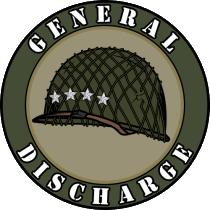
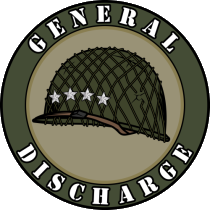

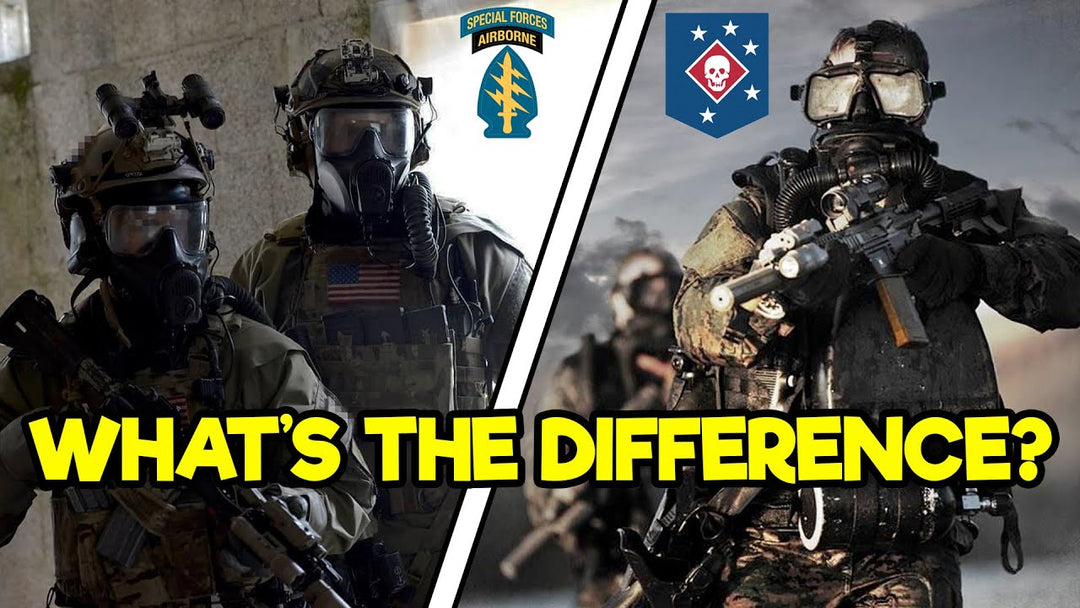
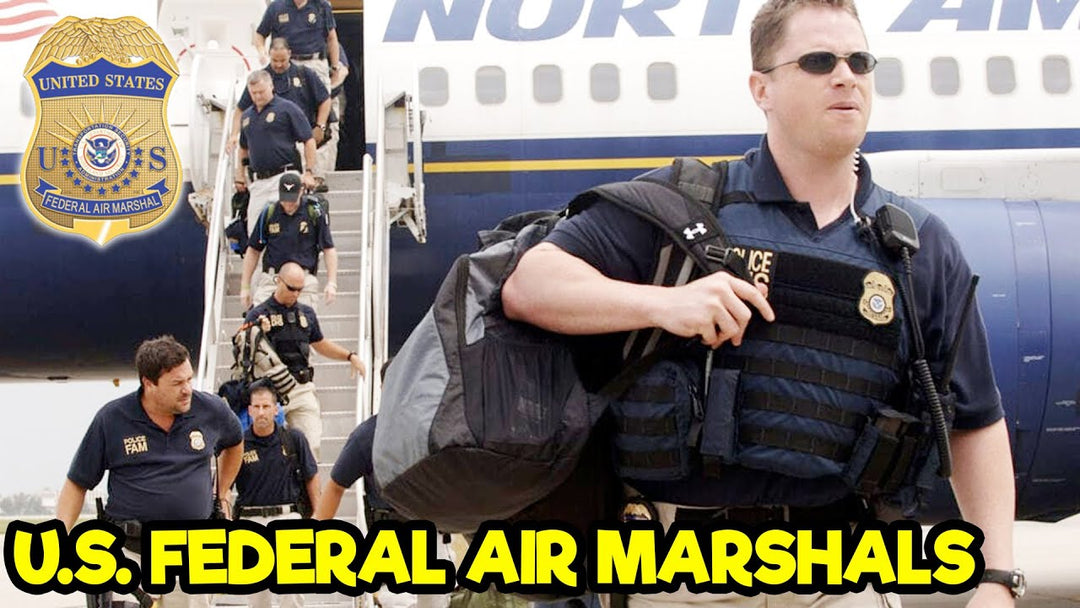
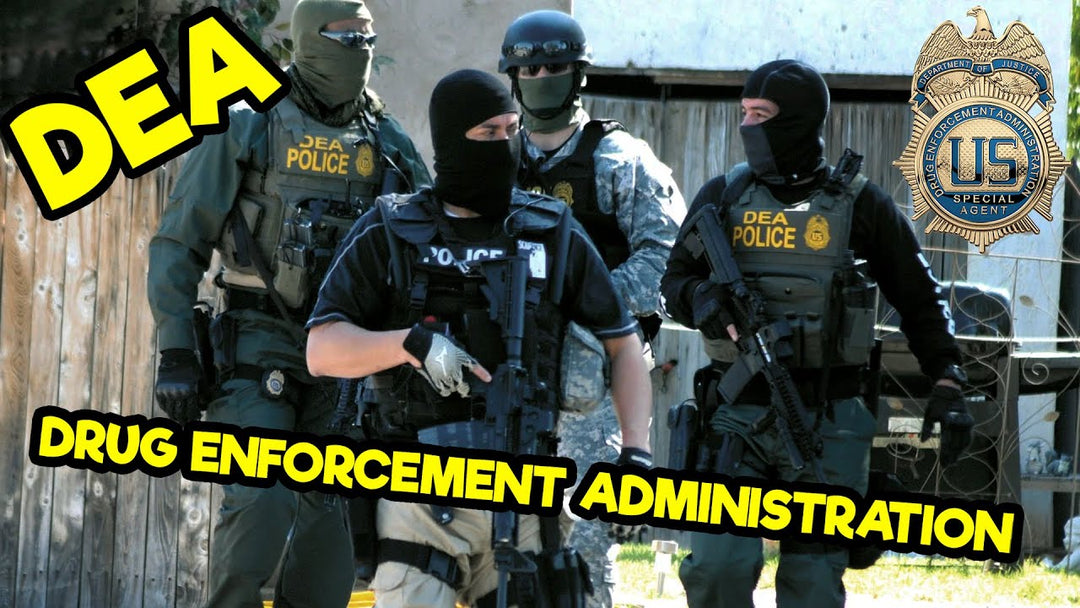
NZ SAS, a glaring ommission, formed at the same time as the SASR for the same role in Malaya. They have served also in Borneo, Vietnam, Timor and Afghanistan.
Leave a comment